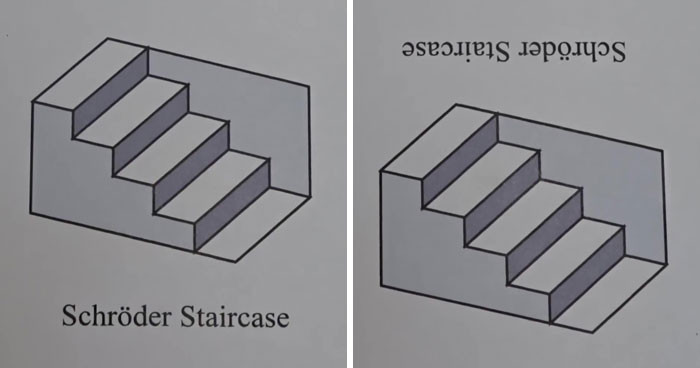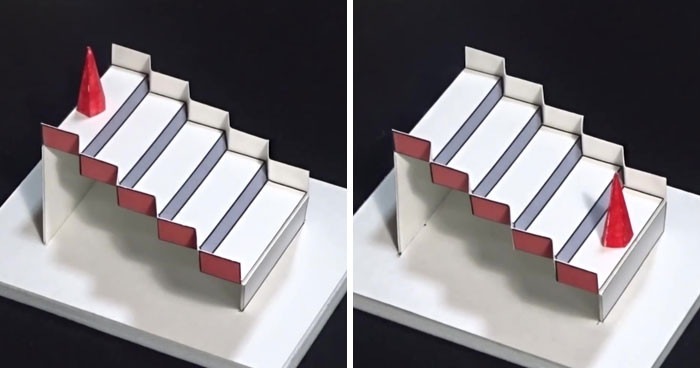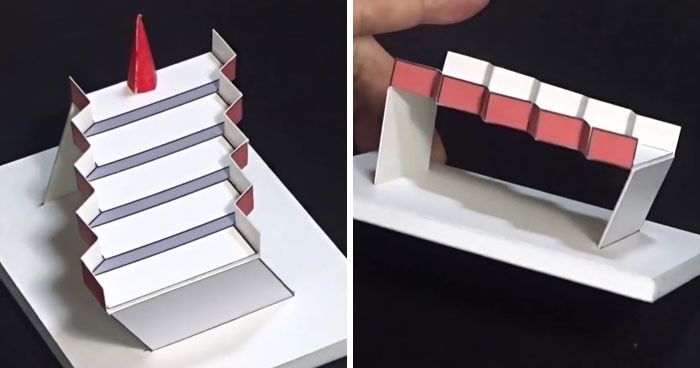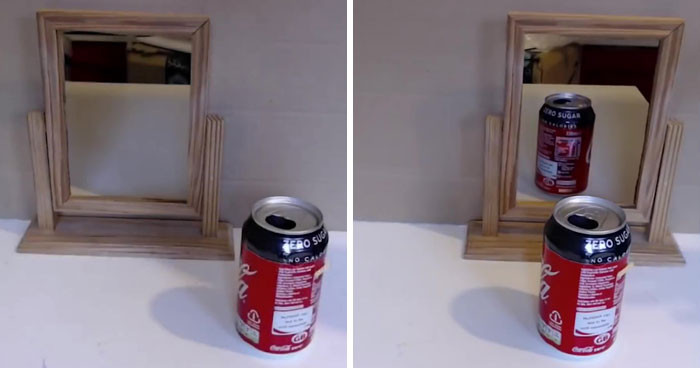Perplexing 3D Schröder Staircase Optical Illusion Earned Best Illusion Of The Year 2020 Award
Our minds often play tricks on us, and it can sometimes be fun. Take optical illusions, for instance. They can keep us entertained for hours. Our brains don’t like to work hard, and they always choose the more comfortable way of interpreting the image they are getting. Our eyes just capture the image, and then our brain explains it as it wants.
A competition called Best Illusion Of The Year Contest just announced the winners of the year 2020, and the winning optical illusions are amazing. Illusion Of The Year Contest is held every year and organized by the Neural Correlate Society that wants to celebrate illusions created using creativity.
Schröder’s stairs
 Kokichi Sugihara / Best Illusion of the Year Contest
Kokichi Sugihara / Best Illusion of the Year ContestIt’s not just for fun; the main goal is to understand sensory perception and many ophthalmic and neurological illnesses.
This year’s winners were recently revealed, with this 3D interpretation of Schröder’s stairs winning the first prize. Initially created as a 2D image by a famous German natural scientist Heinrich G. F. Schröder that, this illusion looks completely the same when overturned.
The legendary 2D illusion looks the same despite flipping it upside down, and now it became 3D
 Kokichi Sugihara / Best Illusion of the Year Contest
Kokichi Sugihara / Best Illusion of the Year Contest Kokichi Sugihara / Best Illusion of the Year Contest
Kokichi Sugihara / Best Illusion of the Year ContestThe 3D model used in this illusion was designed by Kokichi Sugihara of Meiji University, Tokyo, Japan. The description says that this is one of those illustrations that has two interpretations, whether it’s 2D or 3D. It remains a staircase seen from above, even when being rotated 180 degrees. People were blown away by this image.
Here’s a detail video of the 3D Schröder’s stairs illusion
Matt Pritchard from the UK won second place with his Coca-Cola can and mirror optical illusion
 Kokichi Sugihara / Best Illusion of the Year Contest
Kokichi Sugihara / Best Illusion of the Year ContestThe contest has three stages: submission, selection of the Top 10 finalists, and finally, the election of the Top 3 winners. A group of judges narrows down all of the proposals to make a top 10 list of the best ones and pick out three grand winners who will also receive cash prizes.
Other prizes went to an illusion of a couple of Coca-Cola cans and a phony mirror, and a set of distorted 2.5D grid forms.
The illusion with the cans was created by Matt Pritchard from the UK. It’s of a mirror frame adjacent to a wall that, when moved, shows a Coke can. But there is no mirror there, and the structure is entirely see-through. There’s a hole in the wall with a matching can.
It looks like the mirror is reflecting the can, but it’s a hole in the “wall” and a frame without a mirror.
 Matt Pritchard / Best Illusion of the Year Contest
Matt Pritchard / Best Illusion of the Year Contest Matt Pritchard / Best Illusion of the Year Contest
Matt Pritchard / Best Illusion of the Year ContestDaniël Maarleveld from the Netherlands got third place for her set of 2.5D grid shapes
 Daniël Maarleveld / Best Illusion of the Year Contest
Daniël Maarleveld / Best Illusion of the Year ContestDaniël Maarleveld from the Netherlands won third place with his video of moving 2.5D shapes presented as a bending grid.
Daniëlhas been posting letter simulations on his Instagram account for a while when he revealed what he calls “illogical logic”: “With every scripted letter animation I made, I found a new principle within this illusion. I later scripted these animations with the help of Jonathan Puckey, co-founder of code platform paper.js.”
 Daniël Maarleveld / Best Illusion of the Year Contest
Daniël Maarleveld / Best Illusion of the Year Contest
“At the moment, I am actually finalizing a script to generate entire animated impossible typefaces so that I could make the whole alphabet. But, the letters I picked showed the different illusions the best. For instance, it shows that the letters bend in an illogical way—that you look at the top of the shape and the bottom at the same time.
The only element that I think could be clearer is the fact that the letters switch from hollow to convex halfway. I made an ampersand animation that shows that better, but I choose to show only one type of impossible typefaces to be more consistent.”
 Daniël Maarleveld / Best Illusion of the Year Contest
Daniël Maarleveld / Best Illusion of the Year Contest
Making these using scripts requires quite a lot of time and patience. With every script added, Daniël kept pushing the boundaries. Interestingly, when he was creating the video for the competition, it was difficult for him to keep it concise about what’s so illogical about these images.
 Daniël Maarleveld / Best Illusion of the Year Contest
Daniël Maarleveld / Best Illusion of the Year Contest
“I didn’t know Kokichi Sugihara’s work at first, but I love it. He has been inventing optical illusions before I was born and has now made a ninth generation of his illusions. I already think it is a great honor that I am in the top 3 with him. Sugihara made a couple of illusions where the back reflection of the shape looks different than the front of the shape, the Schröder’s stairs are very interesting because the shape of the front and back appears to be the same.”
Watch the video:
Students from the University of California also presented their flashing ladybug illusion
 Mark Wexler, Patrick Cavanagh, and Stuart Anstis / Best Illusion of the Year Contest
Mark Wexler, Patrick Cavanagh, and Stuart Anstis / Best Illusion of the Year Contest
A submission made by Mark Wexler, Patrick Cavanagh, and Stuart Anstis also made it to the top 10. In it, insects flash while in opposite corners of a moving frame. But, when the structure disappears, it looks like the insects are aligned in one line.
The insects are also presented in a circular pattern, and depending on the frame’s movement, it looks like they are doing circles, but in reality, they are in a single line.
 Mark Wexler, Patrick Cavanagh, and Stuart Anstis / Best Illusion of the Year
Mark Wexler, Patrick Cavanagh, and Stuart Anstis / Best Illusion of the Year
Watch the video:
This illusion shows an image on the left that looks like it has “sun rays” that are, in reality, levied in the right image for reference
 Michael Karlovich and Pascal Wallisch / Best Illusion of the Year Contest
Michael Karlovich and Pascal Wallisch / Best Illusion of the Year Contest
This sunray illusion by Michael Karlovich and Pascal Wallisch shows Intersecting ring-like shapes, and most people see weak rays coming from the center, but this shine is illusory, and they’re not really there.
The perception is even stronger if there are more intersections and the shapes get better aligned, which makes the brain link the dots. This is an example of how our brains interpret information in a way that’s the easiest for them.
 Michael Karlovich and Pascal Wallisch / Best Illusion of the Year Contest
Michael Karlovich and Pascal Wallisch / Best Illusion of the Year Contest




